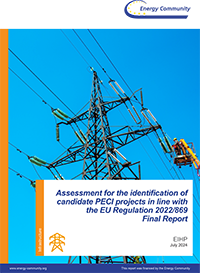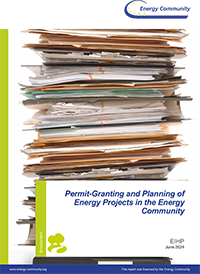|
|
31.12.2020
|
9e37aa8146ae42968b5a22420ca9baa2
f13365801bbd49a5ad9dabcf8d6919e6
2fc72a9c7bb04859ada8456627b1c32c
e74fc3d94ab94572b409765e6b268c15
8b6d078fc0b44e1d8e0367520da562ef
c28d7331c12b4894b89045e26ea1311d
|
|
|
31.05.2022
|
b96bfe18c6a74126a3f0268d2d4ec983
c83a11fd5b8b4480acc3888f6770e2c7
9e37aa8146ae42968b5a22420ca9baa2
d0d33de7464645f29d1e5ae0429ea7d4
c01a179cd9154effa81cb172237a6e3e
8b6d078fc0b44e1d8e0367520da562ef
7fb03090be434d82bb20509fff98eb38
6fb33b42eab94730b03bd3d35ba25b91
5a936f61ed4d45f797502ec5fef0c4b4
c28d7331c12b4894b89045e26ea1311d
2fc72a9c7bb04859ada8456627b1c32c
|
|
|
19.01.2021
|
521170f3d1eb453bb1595068605bbadf
e74fc3d94ab94572b409765e6b268c15
589b23bc8cbb49b1b92e7912d24d314e
946fe3fb9f614848a732bcce618092d1
c28d7331c12b4894b89045e26ea1311d
2fc72a9c7bb04859ada8456627b1c32c
8b6d078fc0b44e1d8e0367520da562ef
|
|
|
15.02.2021
|
946fe3fb9f614848a732bcce618092d1
c28d7331c12b4894b89045e26ea1311d
8b6d078fc0b44e1d8e0367520da562ef
e74fc3d94ab94572b409765e6b268c15
9e37aa8146ae42968b5a22420ca9baa2
|
|
|
16.06.2021
|
521170f3d1eb453bb1595068605bbadf
c28d7331c12b4894b89045e26ea1311d
946fe3fb9f614848a732bcce618092d1
8b6d078fc0b44e1d8e0367520da562ef
6bd359baa3f64df48bcb717f5e27e9e8
|
|
|
16.06.2021
|
946fe3fb9f614848a732bcce618092d1
6fb33b42eab94730b03bd3d35ba25b91
c28d7331c12b4894b89045e26ea1311d
521170f3d1eb453bb1595068605bbadf
8b6d078fc0b44e1d8e0367520da562ef
|
|
|
16.06.2021
|
946fe3fb9f614848a732bcce618092d1
c28d7331c12b4894b89045e26ea1311d
8b6d078fc0b44e1d8e0367520da562ef
012935c4ed2d4a00968c7ed7b9212427
521170f3d1eb453bb1595068605bbadf
|
|
|
16.06.2021
|
5a936f61ed4d45f797502ec5fef0c4b4
8b6d078fc0b44e1d8e0367520da562ef
946fe3fb9f614848a732bcce618092d1
521170f3d1eb453bb1595068605bbadf
c28d7331c12b4894b89045e26ea1311d
|
|
|
16.06.2021
|
d0d33de7464645f29d1e5ae0429ea7d4
946fe3fb9f614848a732bcce618092d1
521170f3d1eb453bb1595068605bbadf
c28d7331c12b4894b89045e26ea1311d
8b6d078fc0b44e1d8e0367520da562ef
|
|
|
16.06.2021
|
521170f3d1eb453bb1595068605bbadf
8b6d078fc0b44e1d8e0367520da562ef
946fe3fb9f614848a732bcce618092d1
c28d7331c12b4894b89045e26ea1311d
1926585dc2784850bc6eb9fc7986c0c9
|
|
|
16.06.2021
|
c83a11fd5b8b4480acc3888f6770e2c7
8b6d078fc0b44e1d8e0367520da562ef
521170f3d1eb453bb1595068605bbadf
946fe3fb9f614848a732bcce618092d1
c28d7331c12b4894b89045e26ea1311d
|
|
|
16.06.2021
|
946fe3fb9f614848a732bcce618092d1
c01a179cd9154effa81cb172237a6e3e
c28d7331c12b4894b89045e26ea1311d
521170f3d1eb453bb1595068605bbadf
8b6d078fc0b44e1d8e0367520da562ef
|
|
|
16.06.2021
|
b96bfe18c6a74126a3f0268d2d4ec983
c28d7331c12b4894b89045e26ea1311d
8b6d078fc0b44e1d8e0367520da562ef
946fe3fb9f614848a732bcce618092d1
521170f3d1eb453bb1595068605bbadf
|
|
|
05.07.2022
|
c83a11fd5b8b4480acc3888f6770e2c7
5a936f61ed4d45f797502ec5fef0c4b4
6bd359baa3f64df48bcb717f5e27e9e8
d0d33de7464645f29d1e5ae0429ea7d4
c01a179cd9154effa81cb172237a6e3e
1926585dc2784850bc6eb9fc7986c0c9
7fb03090be434d82bb20509fff98eb38
012935c4ed2d4a00968c7ed7b9212427
c28d7331c12b4894b89045e26ea1311d
9e37aa8146ae42968b5a22420ca9baa2
2355fd8c59044e4e825eb9b87c74a6b3
8b6d078fc0b44e1d8e0367520da562ef
6fb33b42eab94730b03bd3d35ba25b91
b96bfe18c6a74126a3f0268d2d4ec983
|
|
|
31.10.2023
|
1926585dc2784850bc6eb9fc7986c0c9
6fb33b42eab94730b03bd3d35ba25b91
c01a179cd9154effa81cb172237a6e3e
b96bfe18c6a74126a3f0268d2d4ec983
c28d7331c12b4894b89045e26ea1311d
d0d33de7464645f29d1e5ae0429ea7d4
6bd359baa3f64df48bcb717f5e27e9e8
5a936f61ed4d45f797502ec5fef0c4b4
ac1469acd84744a4ba84302170fac7fa
c83a11fd5b8b4480acc3888f6770e2c7
8b6d078fc0b44e1d8e0367520da562ef
9e37aa8146ae42968b5a22420ca9baa2
|
|
|
29.09.2023
|
6fb33b42eab94730b03bd3d35ba25b91
8b6d078fc0b44e1d8e0367520da562ef
c83a11fd5b8b4480acc3888f6770e2c7
5a936f61ed4d45f797502ec5fef0c4b4
c01a179cd9154effa81cb172237a6e3e
9e37aa8146ae42968b5a22420ca9baa2
ac1469acd84744a4ba84302170fac7fa
d0d33de7464645f29d1e5ae0429ea7d4
b96bfe18c6a74126a3f0268d2d4ec983
c28d7331c12b4894b89045e26ea1311d
|
|
|
13.05.2020
|
1926585dc2784850bc6eb9fc7986c0c9
5a936f61ed4d45f797502ec5fef0c4b4
d0d33de7464645f29d1e5ae0429ea7d4
c28d7331c12b4894b89045e26ea1311d
6fb33b42eab94730b03bd3d35ba25b91
c01a179cd9154effa81cb172237a6e3e
c83a11fd5b8b4480acc3888f6770e2c7
8b6d078fc0b44e1d8e0367520da562ef
6bd359baa3f64df48bcb717f5e27e9e8
9e37aa8146ae42968b5a22420ca9baa2
012935c4ed2d4a00968c7ed7b9212427
b96bfe18c6a74126a3f0268d2d4ec983
f13365801bbd49a5ad9dabcf8d6919e6
|


-1.2025-04-30-11-41-33.jpg)



